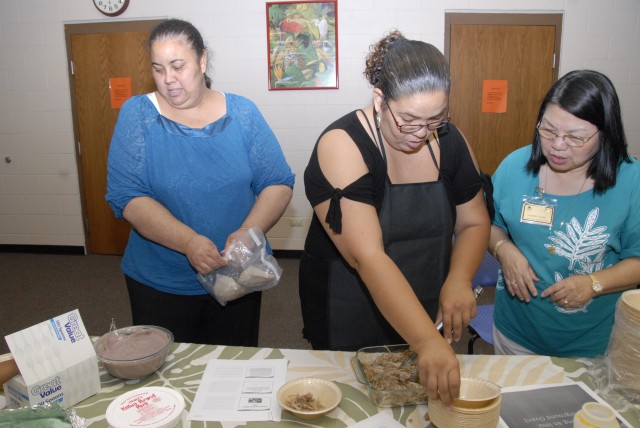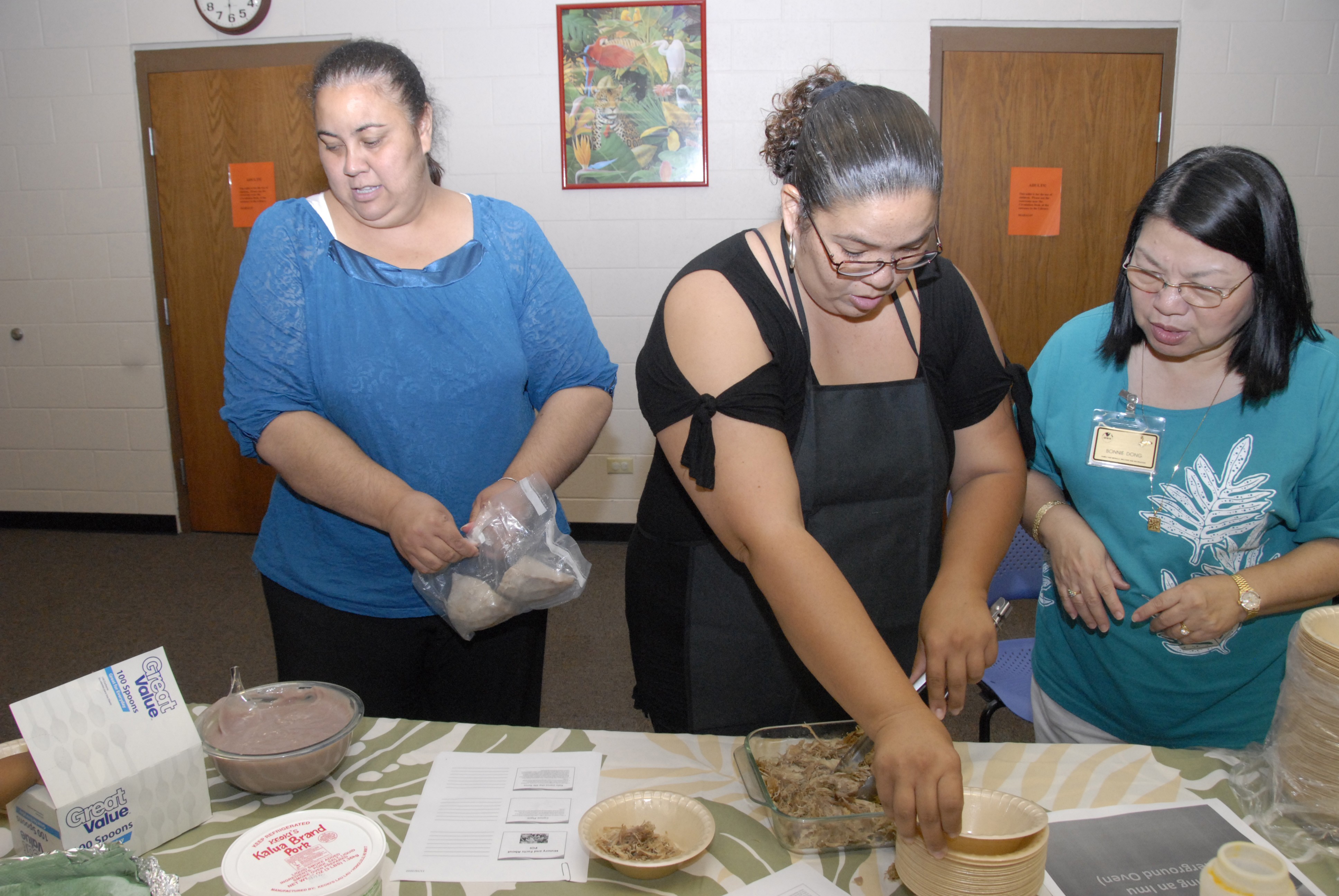
SCHOFIELD BARRACKS, Hawaii - A helping of Hawaiian culture and food was served to the audience at the traditional Hawaiian foods workshop, Nov. 16, here, at the Sgt. Yano Library.
As Piilani Wright taught the audience how to cook kalua pig in an imu and how to pound poi, she shared the foods' history.
Poi is made from kalo, or taro, a canoe plant brought to Hawaii by the early Polynesian settlers. Considered a staple of the Hawaiian diet, the vegetable's leaves and roots are used in cooking. Leaves can be cooked as greens, very much the same way as spinach. Its roots, or tubers, can be baked, boiled or steamed. Cooked roots are combined with water and then mashed to make poi. "Some people call poi the soul food of Hawaii," Wright said.
Besides its importance in traditional Hawaiian fare, poi can calm queasy stomachs and also be fed to babies who are allergic to milk.
Kalua pig, another traditional Hawaiian staple, is cooked in an underground oven known as an imu. A pig is laid on top of hot lava rocks and covered with banana leaves. Wet burlap or feed sacks are placed over the leaves, and then covered with sand or dirt to keep the steam in. The pig is then left to cook all day. According to Wright, the distinctive flavor of the pork originates from the banana leaf.
After the demonstration, the audience sampled the poi and kalua pork mixed together in small bowls. Wright recommended mixing poi with the kalua pork as each distinctive flavor balances each other.
Amanda Smith, who works at Sgt. Smith Library, described the poi taste as "unique." She returned for seconds, as did Pfc. Paul Storrs, 3rd Squadron, 4th Cavalry Regiment, 3rd Brigade Combat Team, 25th Infantry Division. He said the poi was "tangy." He paused, and then added "pasty."
Storrs' wife, Deny, seconded "pasty."
Both are newcomers to the island; he arrived in mid-October while she arrived "about a week ago." The event was their first Hawaiian culture workshop. "I want to learn all I can," she said.
Find out more about future Hawaiian cultural events by calling the U.S. Army Garrison-Hawaii's Native Hawaiian Liaison Office at (808) 655-9694.

Social Sharing